I’m seldom surprised by golf courses but Washtenaw did that and more. I’m stealing this phrase from another writer who called it “deliciously old school”. The design tenets of yesteryear are wonderfully displayed here. There’s tight fairways with century old trees, small well contoured greens, engaging landforms, and a villainous creek that loops through several holes.

Established in 1899, Washtenaw is one of Michigan’s oldest golf clubs. It started out as three holes, then six, nine and finally eighteen. Golfpass lists Bert Wey as the architect, but articles I’ve read list the designer as unknown. The club did hire Ray Hearn in 2020 to help enlarge greens, remove trees, reposition bunkers, and add some new tees.
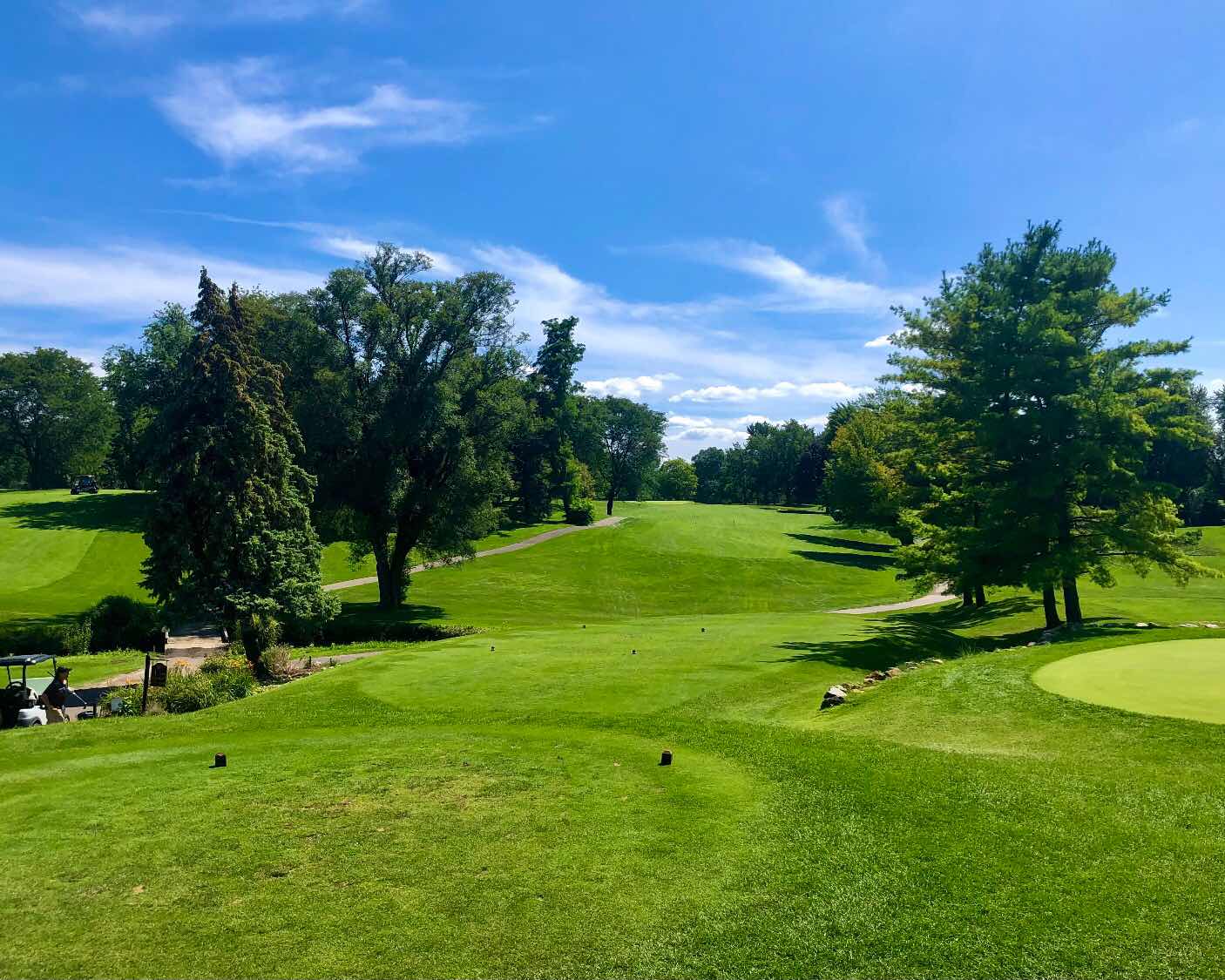
(The 349/319 yard par four first starts the round off in rollicking good fashion. The tee shot must navigate two rolling hills and trees to find a good angle to the green…

…the plateau putting surface has a false front that will catch anything short or anything that has too much spin. It’s a birdie opportunity that can go sideways very quickly.)
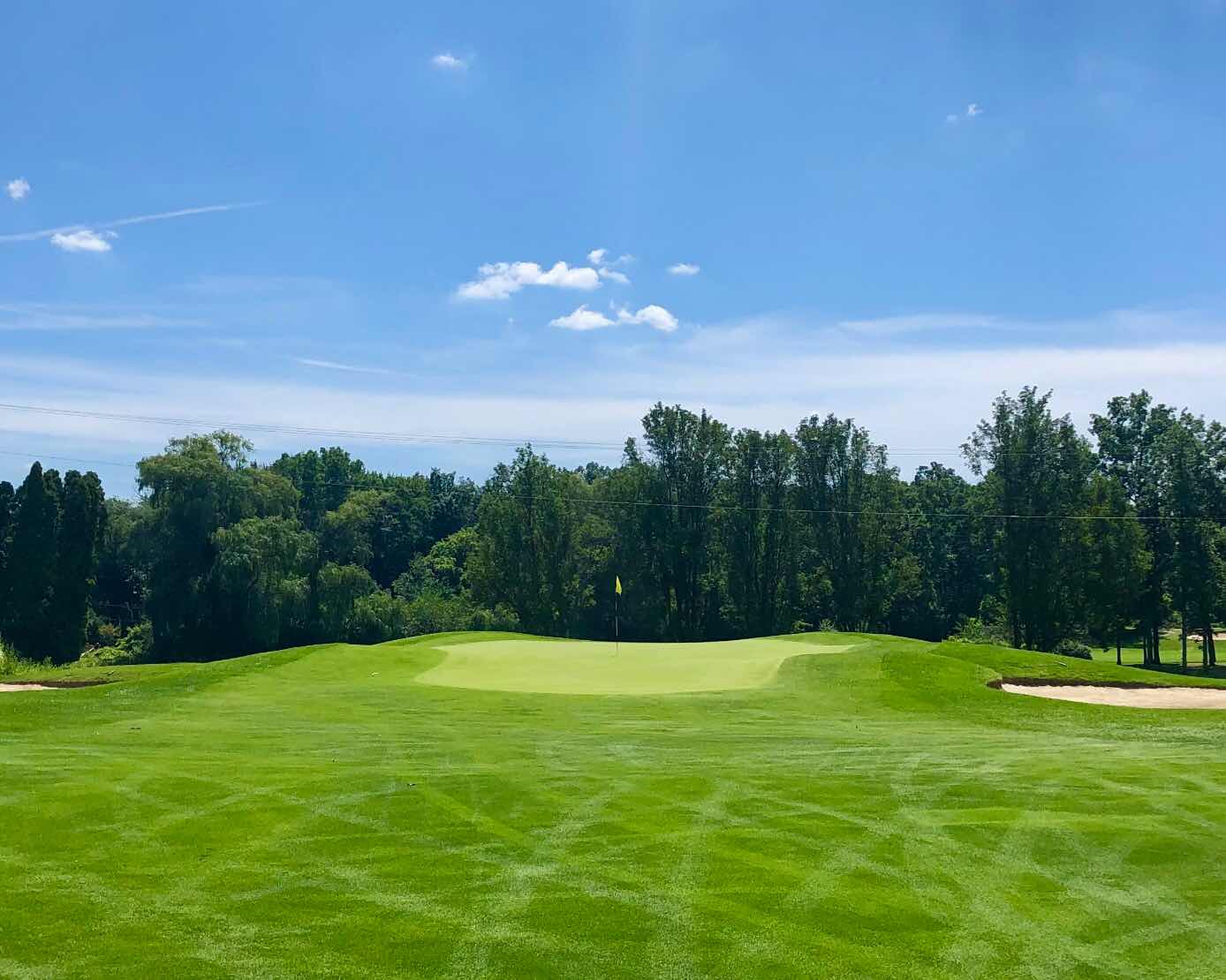
(The 425/405 yard par four second is defended by this narrow green. Note how the green sits in the saddle of the mounding. Once one finds himself outside this bracket, recovery shots become much more difficult. The green is only 10 yards wide but expands to 20 in the rear. Par is a good score.)
The topography at Washtenaw is ideal for golf. It’s laid out on a rectangular piece of property with a valley occupying the north end where the clubhouse is located. Paint Creek snakes through this section, and the architect uses it perfectly. It protects a few greens including the eighteenth and a couple fairways, but mostly it enhances the setting with its beauty and tranquility.

(The 580/562 yard par five sixth plays every bit its yardage as it steadily climbs to this very large green. The two tiered putting surface is nearly as wide as it is deep. Pin placement is of the utmost importance. Besides being on the proper tier, one also wants to be in the correct quadrant Note that the green is raised above the fairway, so spinning it off the front needs to taken into account. A five is always a good score.)

(The 348/338 yard par four seventh begins the three hole stretch that the pro told me was key to a good round. The tee box is elevated behind the sixth green, and the real question is… what yardage are we trying to get for a third? Most will layup and hit a short iron in, but longer hitters have a dilemma. As the crow flies, it’s only 316 yards to the green, and only 260 yards to carry the creek. Of course any type of mishit will find the water, but the pro told me it is easier to drive than the eighth. It’s fun hole that modern technology has made exciting!)

(The 322/286 yard par four eighth is a fantastic short par four! The bunker on the left is our aiming point, and a sliver of fairway begins at the creek and slides around the sand…

…this view is past the bunker but notice how one cannot make out the pin placement. A wall of grass greets us instead. The fairway has widen out too…

…the green is way above atop the hill. It is two tiered with the lower portion in the front left. It’s also a pure 312 yard uphill shot if one is attempting to drive it. Coming up short in the wall of rough is an instant way to make bogey…
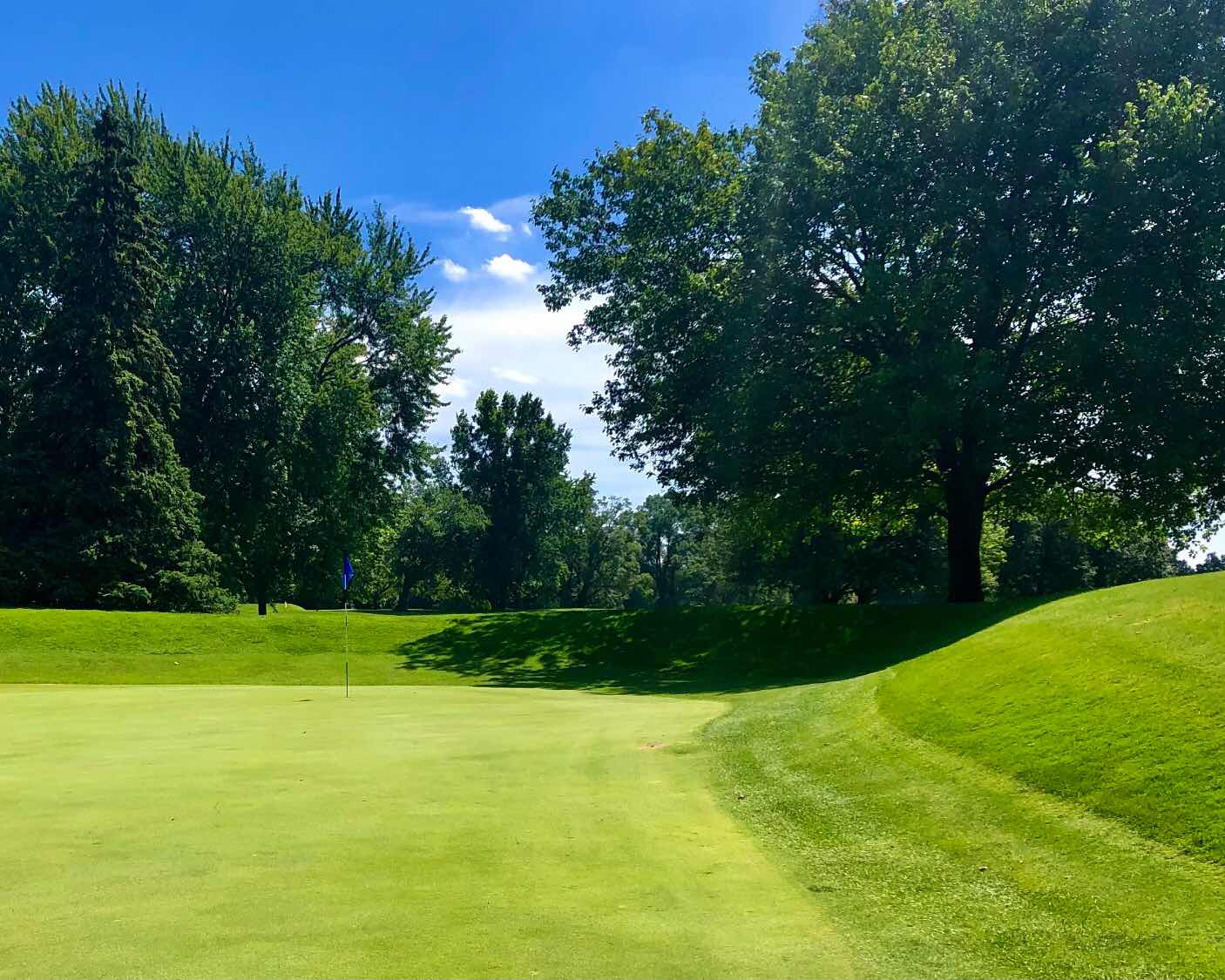
…the entire back half plays in a punchbowl so one can work the ball off the sides. What a hole! I’m sure regulars are thinking about it the moment they step on the first tee. This is a world class hole!)

(The 194/172 yard par three ninth finishes the front off in style. Both the tee and green are on the high ground with the creek in between. It’s well bunkered in front so take an extra club.)
The architect routed the course using the valley as much as possible. His intuition proved correct as these are the ones everyone remembers. Eight holes use it in some capacity and two other holes play to its edge, giving golfers a great view of the ones below. Those eight holes can be seen from the clubhouse, and when one arrives, these are the ones that capture your attention. The beauty of the creek, the terrain climbing up the hill, the eighteenth green below the pro shop door, all add to a great first impression.
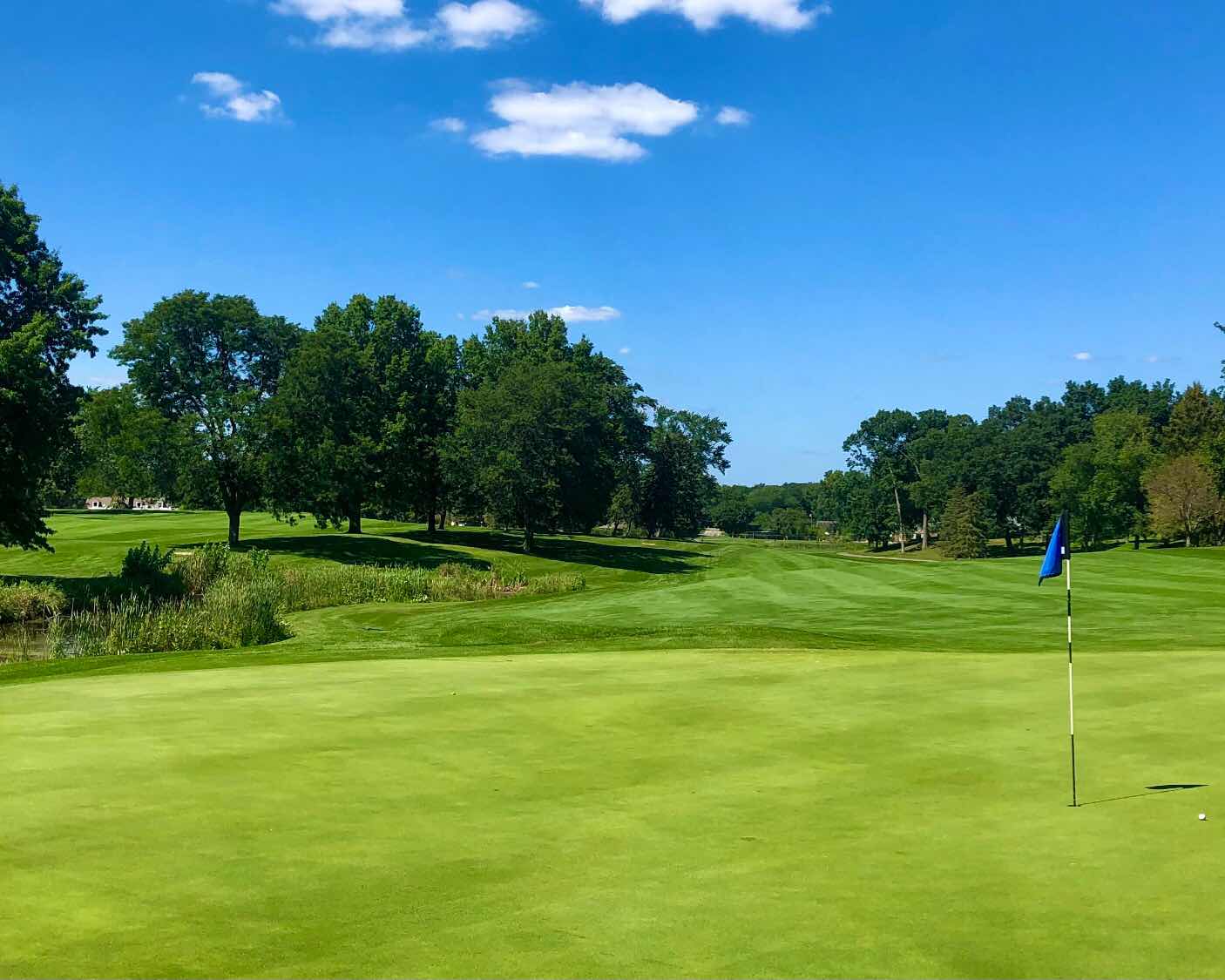
(The 540/501 yard par five tenth starts by the creek and plays uphill to a large green. The first half plays off a right to left slope then it plays off a left to right slope. Expect to hit at least one shot from an uneven lie. Birdie is well earned.)

(The downhill 150/135 yard twelth is backdropped by the creek. With a short iron in hand, most golfers will be thinking birdie. Note that not one bunker is used to defend this delicate hole.)

(The 542/503 yard par five thirteenth faces this uphill drive. Long hitters should have no issue reaching the top but shorter players have a sand trap on the left to avoid…

…the green pitches hard with bunkers guarding front left and right. Today’s pin is just over the front trap, and it takes skill to nip it just right and spin it back to the hole. A putting surface with this much slope will make two putting from any significant distance challenging…
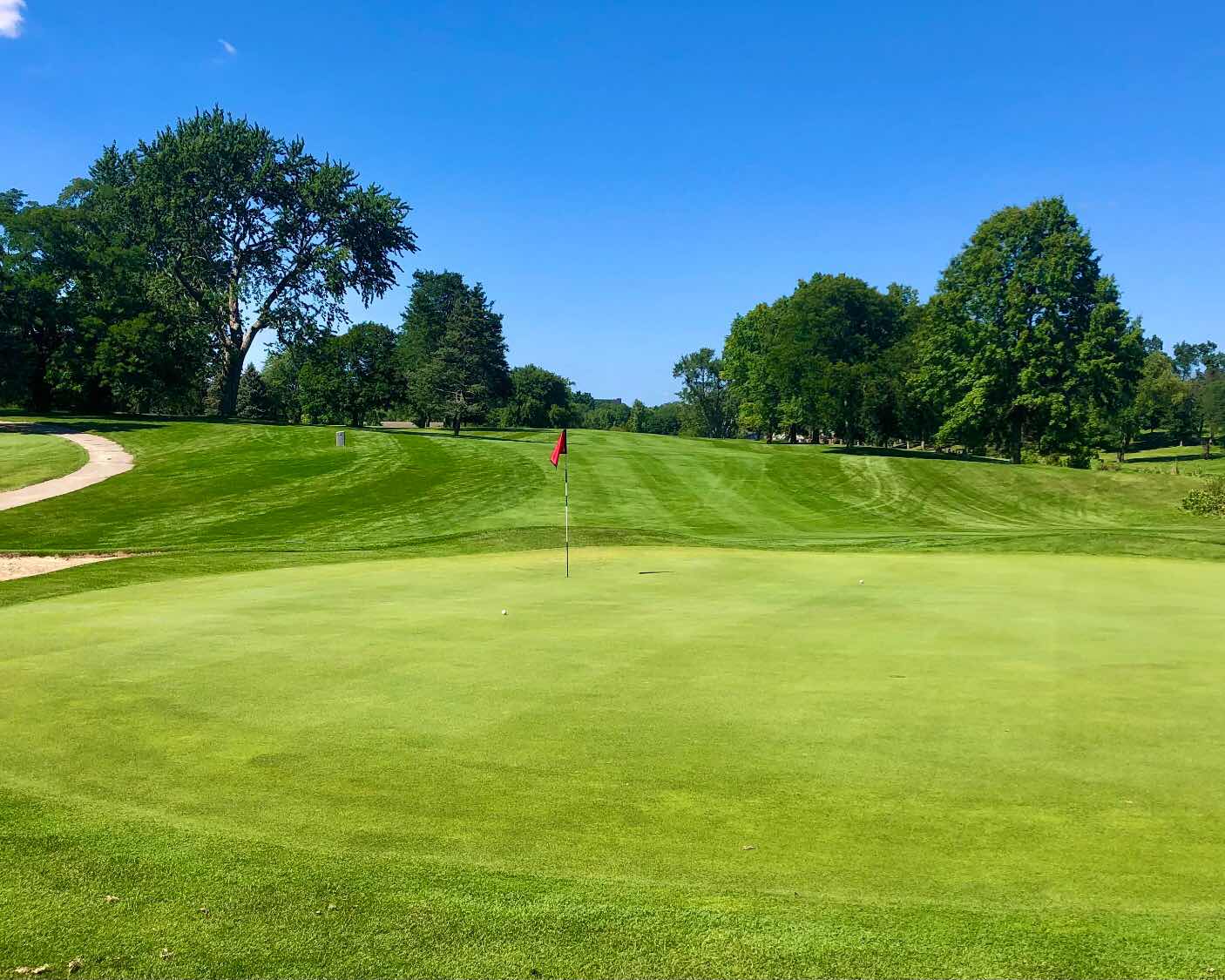
…looking back, one can see that the long hitter has a downhill slope which can bring the green into range. It’s another terrific par five.)
Last year, Williams Country Club was my favorite course within three hours that I never heard of, and this year Washtenaw claims that title. When I first started blogging, courses such as these were what I was hoping to find. Besides providing great golf, both possess excellent value, especially Washtenaw which only cost $60!

(The 330/308 yard par four sixteenth is a good chance to get a stroke back. The green slopes from the back left to the front right. It has a strong pitch so stay below the hole. Front pin placements are the most difficult.)

(The 368/362 yard par four eighteenth plays straightaway before falling downhill to the creek. The pro told me the best drive bounces at least once, and if it clears the downslope on the fly, then it’s possible to reach the water 265 yards from the tee…

…laying back is an option, but if one can gauge the bounce correctly, then it’s just a wedge approach. For those who don’t make it to the bottom, a downhill lie will tighten the screws on an already intimidating shot.
A poor tee shot brings all sorts of bad numbers into play. It’s a very interesting finisher!)
Michigan is loaded with strong golf courses, and how a course like Washtenaw flies under the radar is beyond me. The type of variety in the holes and in the terrain makes this one of the best courses in southeast Michigan. I think it deserves to be nationally recognized, and I’d place it as one top twenty public courses in Michigan. (Note how I didn’t say top ten.)
It’s a tad bit over two hours from Cleveland and it beats most public courses in Columbus. Looking for a road trip? Put this one on your list. I give Washtenaw a 6 (very good)(worth driving two hours to play.)